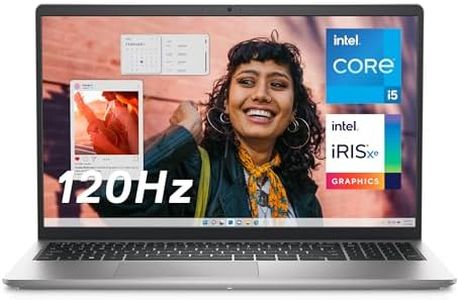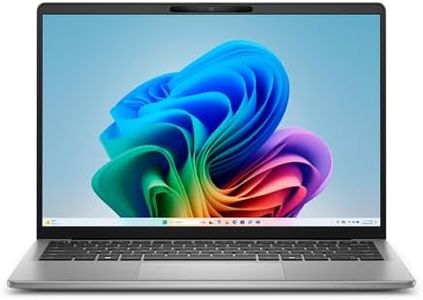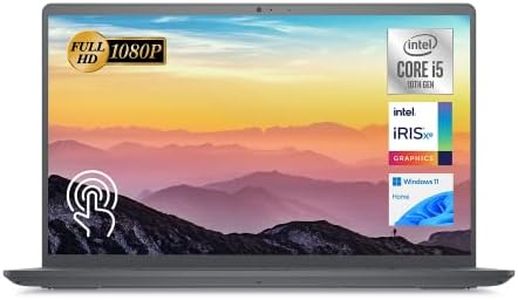We Use CookiesWe use cookies to enhance the security, performance,
functionality and for analytical and promotional activities. By continuing to browse this site you
are agreeing to our privacy policy
4 Best Dell Laptops
From leading brands and best sellers available on the web.Buying Guide for the Best Dell Laptops
Choosing the right Dell laptop can feel overwhelming because there are so many options, but breaking your decision down into several key areas makes things much easier. Start by thinking about what you'll use the laptop for—like work, school, gaming, or creative projects—since your main uses will shape what features matter most. Focus first on the things that directly affect performance and user experience, and then consider the areas that impact comfort and convenience.Processor (CPU)The processor is the engine of your laptop, affecting how fast it handles tasks like web browsing, document editing, or running demanding software. You'll see options ranging from entry-level chips that are fine for basic use, to powerful processors meant for video editing or heavy multitasking. If you just use your laptop for email and streaming, a basic processor works well. For more complex work, like programming or large spreadsheets, step up to a mid-level or high-performance CPU so your laptop keeps up.
Memory (RAM)RAM lets your laptop juggle multiple tasks at once and affects how quickly it responds when you switch between apps. Laptops usually come with 4GB, 8GB, 16GB, or more. For light internet use or word processing, 4GB is workable, but 8GB is far more comfortable for daily tasks. If you do a lot of multitasking or use demanding programs, 16GB or more gives you smoother performance.
Storage Type and CapacityStorage is where your files, pictures, and programs live, and it also affects the laptop’s speed. There’s traditional HDD and the faster SSD. SSDs make your laptop boot up and open files much quicker. For most people, a 256GB SSD hits the sweet spot between capacity and cost, but if you store lots of photos or videos, consider 512GB or more. If you mainly work from the cloud or do only light tasks, 128GB might be enough.
Display Size and ResolutionThe display controls both how big everything looks and how sharp the visuals are. Smaller screens (13-14 inches) are easier to carry, while bigger ones (15-17 inches) give you more viewing space, good for multitasking or watching movies. Resolution ranges from HD up to 4K; higher means crisper images. For everyday tasks, Full HD (1080p) is a good balance. Choose a screen size and clarity that matches your habits—think about where you'll use your laptop most.
Battery LifeBattery life determines how long you can work when away from a power outlet. It ranges from a few hours on powerful machines to all-day life on lighter models. If you travel or move around a lot, look for a longer battery estimate. If you'll mostly use it at a desk, battery isn’t as crucial.
Build Quality and PortabilityBuild quality includes materials, durability, and how much the laptop weighs. Lightweight and sturdy laptops are better for frequent travel or students. If your laptop will stay home, a heavier or bulkier model might be fine. Think about how much you’ll carry it and whether you need a rugged model for tougher handling.
Keyboard and TrackpadThe keyboard and trackpad are your main ways to interact with the laptop. A comfortable, responsive keyboard and a precise trackpad make working easier, especially if you type a lot. If possible, test them out or read up on reviews that mention comfort—especially important for writers, students, or anyone who spends hours on their laptop.
Ports and ConnectivityPorts (like USB, HDMI, headphone jacks) let you connect other devices or accessories. Fewer ports keep the look clean and slimmer, but might limit what you can plug in. Consider what you routinely connect (external drives, monitors) and make sure your laptop offers those ports—especially if you rely on certain accessories at work or school.




